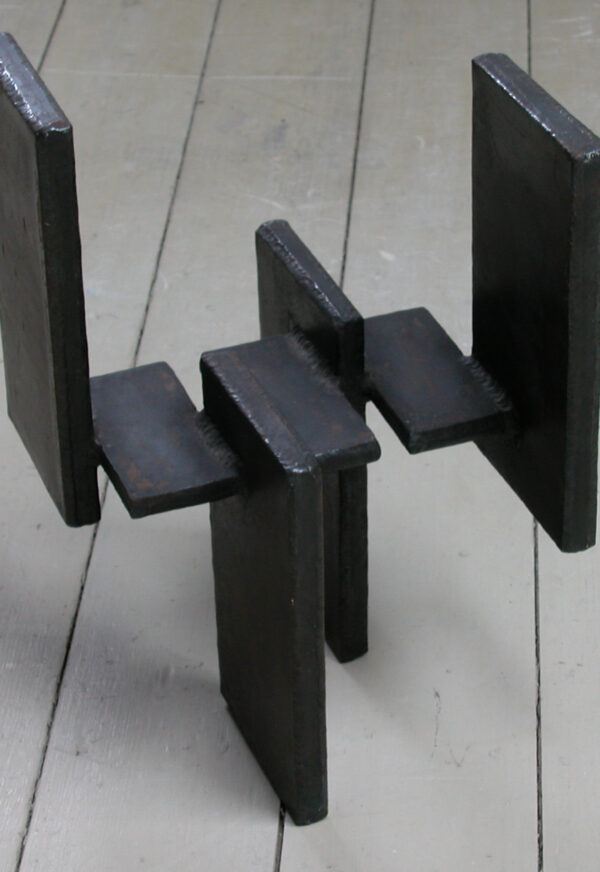1928-Papendrecht
2015-Le Fousseret
Carel Visser is an artist who actively experienced post-war art history and helped shape sculpture during this period. After studying Architecture at the Delft University of Technology, he attended the Hague Academy of Fine Arts. In the period of more than fifty years that followed, he investigated fundamental sculptural issues such as structure, appearance, space and connection between volumes.
His early sculptures, which were created around 1950, mainly depict animal and plant figures. From the mid-1950s onwards, he abandoned figuration and worked mainly geometrically and abstractly. He used iron beams, plates and rods that he welded together. The finish of these sculptures (straight lines that are not exactly straight, welds that are not removed) reflects his aversion to superficial perfection. Important themes are the investigation of the effect of stacking, tilting, rotation and mirroring in spatial sculpture.
In addition to spatial objects and installations, Visser made drawings, woodcuts and collages. The influence of these two-dimensional experiments on his spatial work is particularly evident in the collages – the use of materials of which became increasingly varied and the transient nature of which is reminiscent of Arte Povera.
In his assemblages, Visser uses very diverse materials, (found) objects and shapes, which were cast together in bronze. Later, he also added soft, less conventional materials to his repertoire, such as leather and rubber car tyres. His abstract images then become more open in character. After the 1980s, figuration increasingly returned to his work, but only around 2000 did he depict a single human figure.
